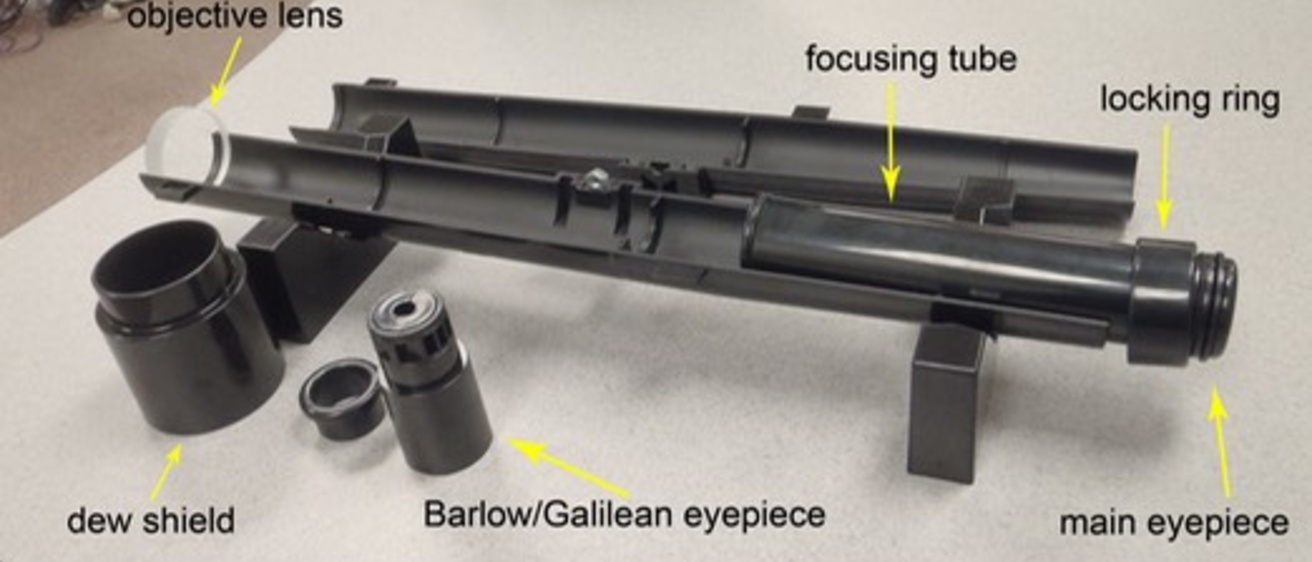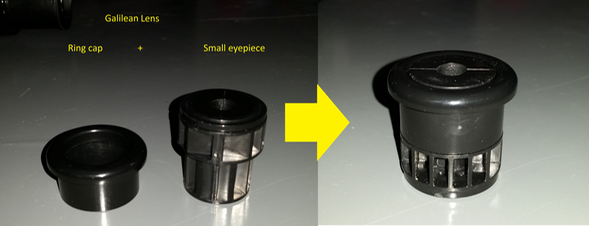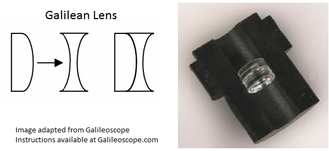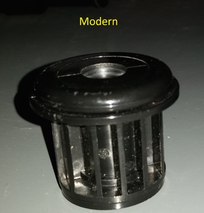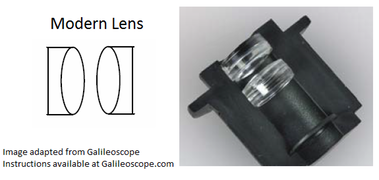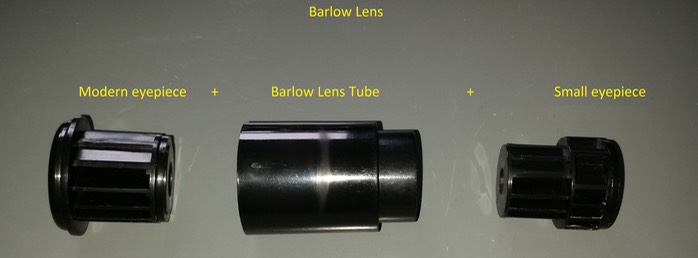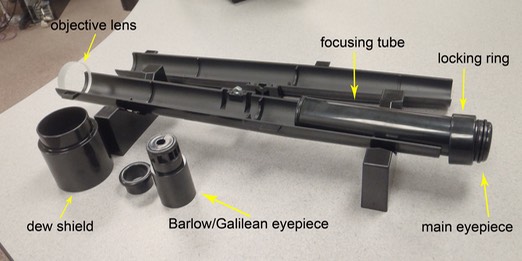
Background:
In this section of the lab, you will be using the Galileoscope, which is a plastic replica of the telescope Galileo would have used to spot the moons of Jupiter, lunar features, and more. Listed below are the pieces you need to complete this exercise.
1. The telescope tube that consists of the focusing tube, locking ring, dew shield, and objective lens.
2. The modern eyepiece (larger lens)
3. The Galilean eyepiece (smaller lens)
4. The ring cap
5. The Barlow tube
